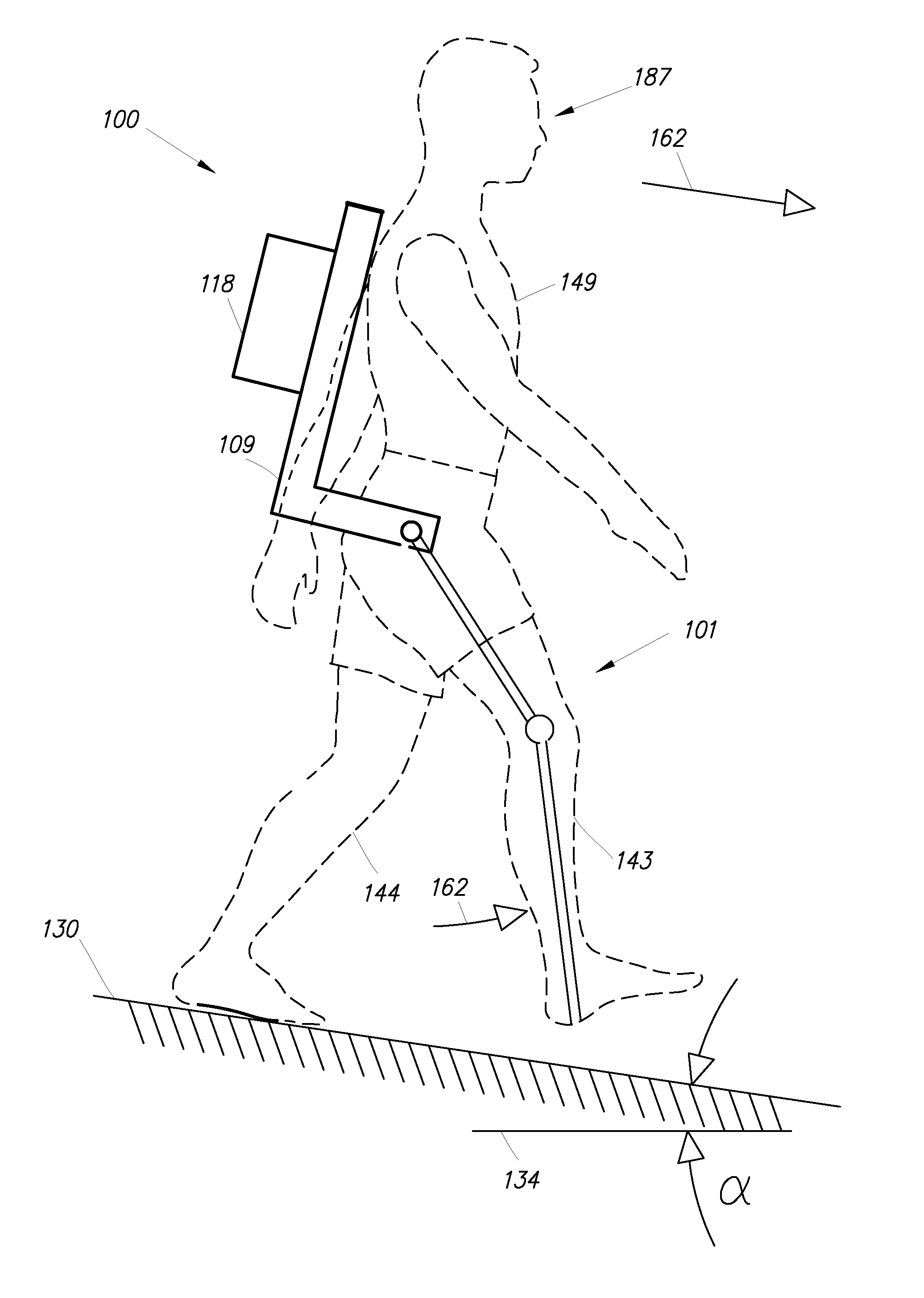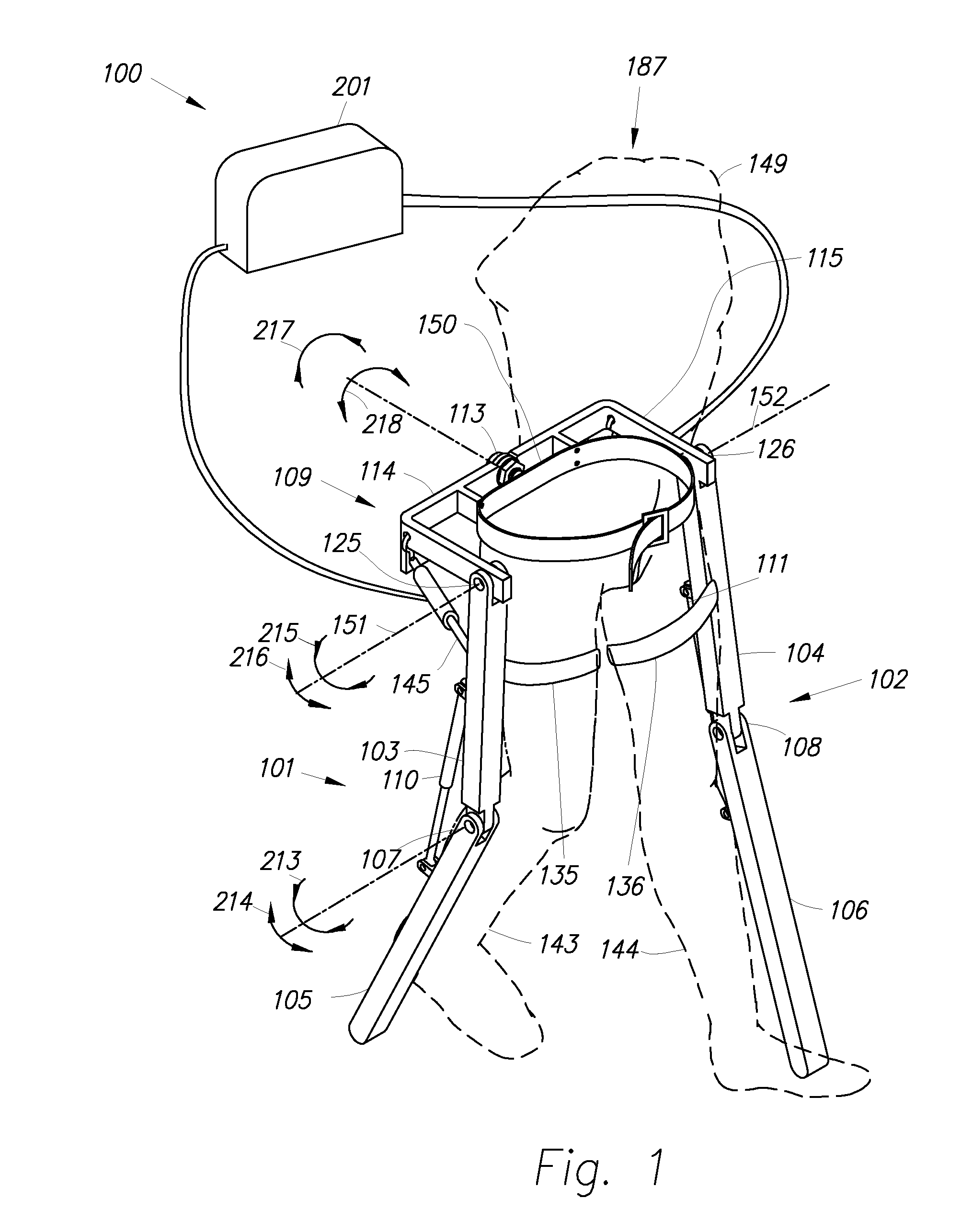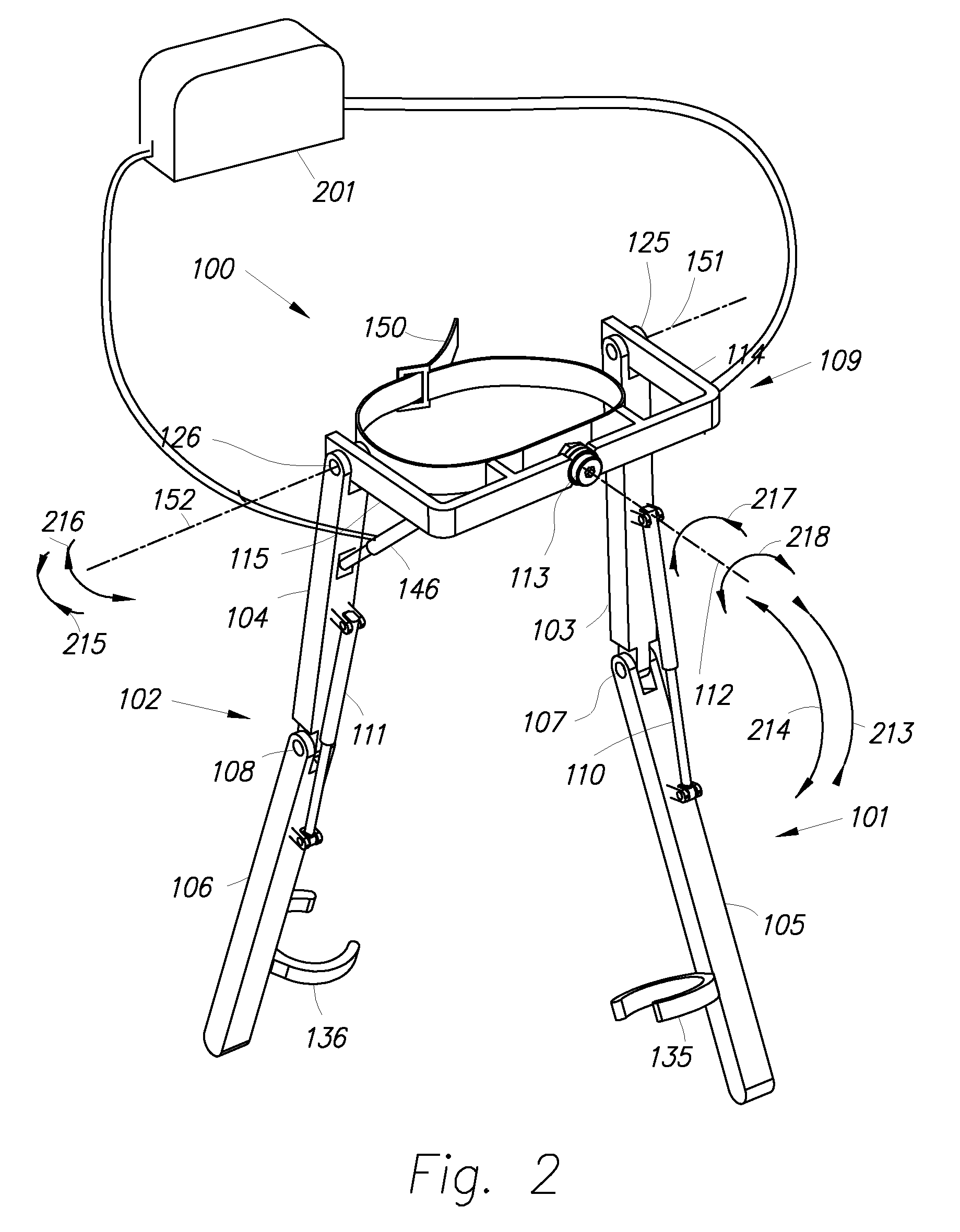Exoskeleton and method for controlling a swing leg of the exoskeleton
a technology of exoskeleton and swing leg, which is applied in the field of exoskeleton systems, can solve the problems of increasing the load carrying ability of the wearer, increasing and consuming a great deal of energy of ordinary people, and achieves the effect of reducing the energy expenditure of the wearer during the swing phas
- Summary
- Abstract
- Description
- Claims
- Application Information
AI Technical Summary
Benefits of technology
Problems solved by technology
Method used
Image
Examples
case 1
[0076) As can be examined from equation (3), if the hip actuator torque, TE, is such that it is larger than the entire term on the right side of equation (3), then the torque from person's right lower limb 143 onto right leg support 101, TH, is positive. This means that if the hip actuator torque is chosen such that it is larger than the entire dynamics of the swinging leg (i.e., the addition of the inertial, gravitational, and frictional torques), then the torque from the person's right lower limb 143 onto right leg support 101 is positive (i.e., clockwise). This further means that the torque from right leg support 101 onto person's right lower limb 143 is along the forward swing direction 162. When the torque on person's right lower limb 143 is in the direction of the swing velocity, mechanical power is transferred from right leg support 101 (or from lower extremity exoskeleton 100) to person's right lower limb 143. Since the time integral of this mechanical power during a period ...
case 2
[0080) As can be examined from equation (3), if the hip actuator torque, TE, is such that it is smaller than the entire term on the right side of equation (3), then the torque from person's right lower limb 143 onto right leg support 101, TH, is negative. This means that if the hip actuator torque is chosen so that it is smaller than the entire dynamics of the swinging leg (i.e., the summation of the inertial, gravitational, and frictional torques), then the torque from the person's lower limb 143 onto right leg support 101, TH, is in the anticlockwise direction. This indicates that the torque on person's right lower limb 143 is in the clockwise direction (i.e., opposite to forward swing direction 162). When the torque on person's right lower limb 143 is in the opposite direction of the lower limb's swing velocity, power is transferred from right lower limb 143 (i.e., person 187) to leg support 101 (i.e., lower extremity exoskeleton 100). Since the time integral of this mechanical p...
case 3
[0082) As can be examined from equation (3), if the hip actuator torque, TE is such that it is equal to the entire term on the right side of equation (3), then the torque from person's right lower limb 143 onto right leg support 101, TE is zero. This means that if the hip actuator torque is chosen to be exactly equal to the entire dynamics of the swing leg (i.e., the summation of the inertial, gravitational, and frictional torques, then the interaction torque between the person's lower limb and the exoskeleton leg support is zero). This means that the wearer does not feel the exoskeleton leg support during the swing phase and therefore, the power that the wearer is spending to swing his / her lower limb is the same as what he / she would be spending when swinging his / her lower limb without any exoskeleton. This means no energy is transferred between the exoskeleton and its wearer during the swing phase. In this case, the wearer's energy expenditure neither increases nor decreases due to...
PUM
 Login to View More
Login to View More Abstract
Description
Claims
Application Information
 Login to View More
Login to View More - R&D
- Intellectual Property
- Life Sciences
- Materials
- Tech Scout
- Unparalleled Data Quality
- Higher Quality Content
- 60% Fewer Hallucinations
Browse by: Latest US Patents, China's latest patents, Technical Efficacy Thesaurus, Application Domain, Technology Topic, Popular Technical Reports.
© 2025 PatSnap. All rights reserved.Legal|Privacy policy|Modern Slavery Act Transparency Statement|Sitemap|About US| Contact US: help@patsnap.com



